
We make it easy to combine biking and transit
You can leave your bike at one of the many Park & Ride bike racks or lockers or bring it with you on the bus. Bikes are a great way to get to or from a bus stop or to meet a carpool or Vanpool. Every bus and train in the Puget Sound region is equipped with a bike rack. Vanpool vans can be equipped with racks on request. Bikes travel free on public transportation on a first-come, first-served basis.
Bicycle requirements
Bikes allowed
Bikes that meet the following requirements are permitted on Community Transit buses.
- Conventional, single seat, two-wheeled bikes
Both wheels must fit into bike rack wheel slots, and the support arm/hook must fit over the top of the bike wheel (fenders ok). - Folding bikes
These bikes are welcome inside the bus, provided they’re folded and fit underneath the seat and can be kept out of the aisle. - Electric assist and e-bikes
E-bikes are allowed if they do not exceed the 55 pound weight limit of the bike racks, but many electric-assist bikes weigh more than this limit. Your own e-bike may be ok with the battery removed if it weighs less than 55 pounds and a removable battery may be brought inside the bus. - Size and weight limits
The rack can hold the following bike sizes safely:
- Wheel sizes 16-29 inches in diameter
- Wheelbase up to 46 inches
- Tire widths up to 3 inches
- Weight limit of 55 pounds per rack position (including any bike accessories)
Bikes not allowed
Bikes with any of the following issues cannot ride on Community Transit buses.
- For safety reasons, transit does not permit bikes or scooters inside buses other than folded bikes or scooters. Except Swift buses, where bike racks are located inside.
- The racks cannot hold bikes that do not meet the dimension or weight limits listed above under Bikes Allowed, including tandem, recumbent, cargo, three-wheeled, or solid-wheeled bikes, other types of devices, or tires wider than 3 inches.
- Bikes powered by gas or fuel other than battery cannot be accommodated. Many electric-assist bikes exceed the 55 pound weight limit.
- Electric bike share bikes are too heavy for the rack and cannot be loaded onto buses. Please pick up a different bike share on the other end of your transit trip and leave the rack space for personal bikes.
- Bikes with attachments over the front wheel that block the support arm cannot be accommodated. This may include baskets, handlebar packs, etc.
- Accessories or attachments are not acceptable if they have the potential to:
- Prevent a second bike from being loaded or damage an adjacent bike.
- Fly off, flap around, cause a visual distraction or otherwise cause a hazard.
- Obstruct the headlights or turn signals.
- Block the driver's vision. Generally, items attached to a bicycle should be no taller than the height of the handlebars.
- Examples of prohibited items include most types of child seats and baskets fashioned from milk cartons.
It is the sole discretion of the driver at any time to accept or decline any load which is believed to be inherently unsafe for any reason.
How to use our bike racks
Bike racks are on the front of most buses; on Swift bus rapid transit, racks are inside the bus. It is your responsibility to load and unload your bicycle; the bus driver cannot assist you. Cyclists assume all responsibility for any damage and/or injury that occurs as a result of using the bike racks. Bikes may be loaded or unloaded at any bus stop.
Standard bike racks
Before the bus arrives, remove loose items from your bike like water bottles, bike helmets, or pumps. Be aware of how baskets and accessories on your bike may block driver views and remove them if possible. Wait until the bus stops and make sure the driver sees you before stepping in front of the bus.
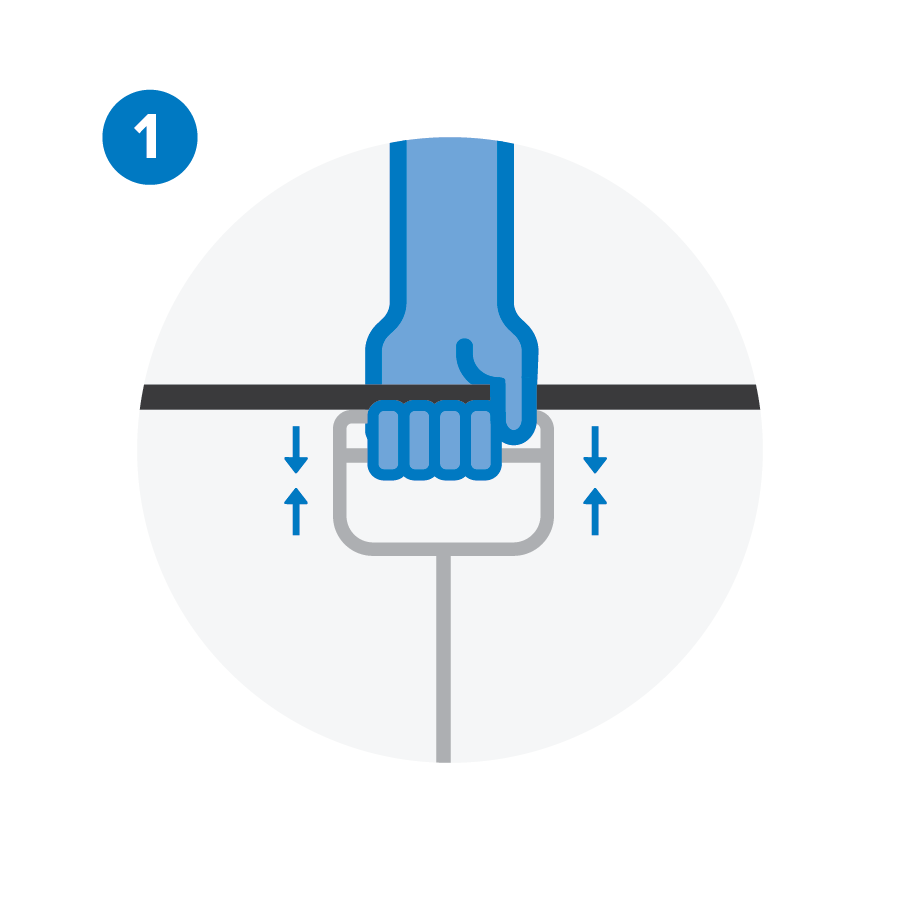
Squeeze the center handle of the bike rack to unlatch it.
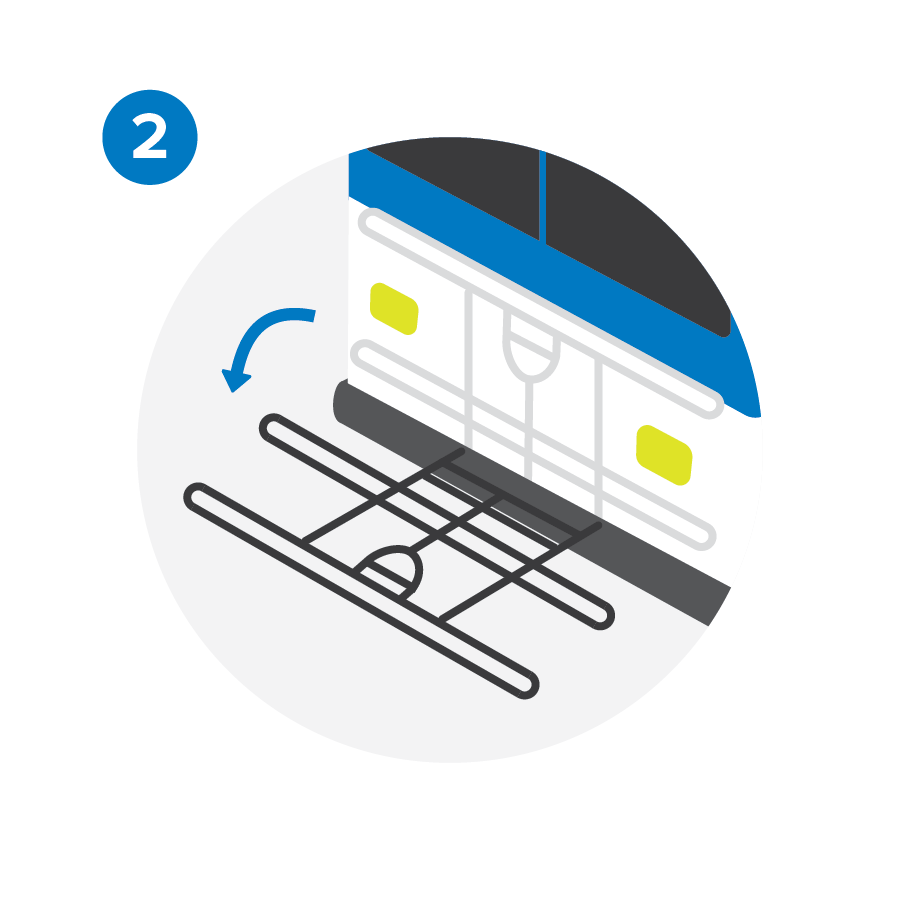
Fold the rack down toward you.
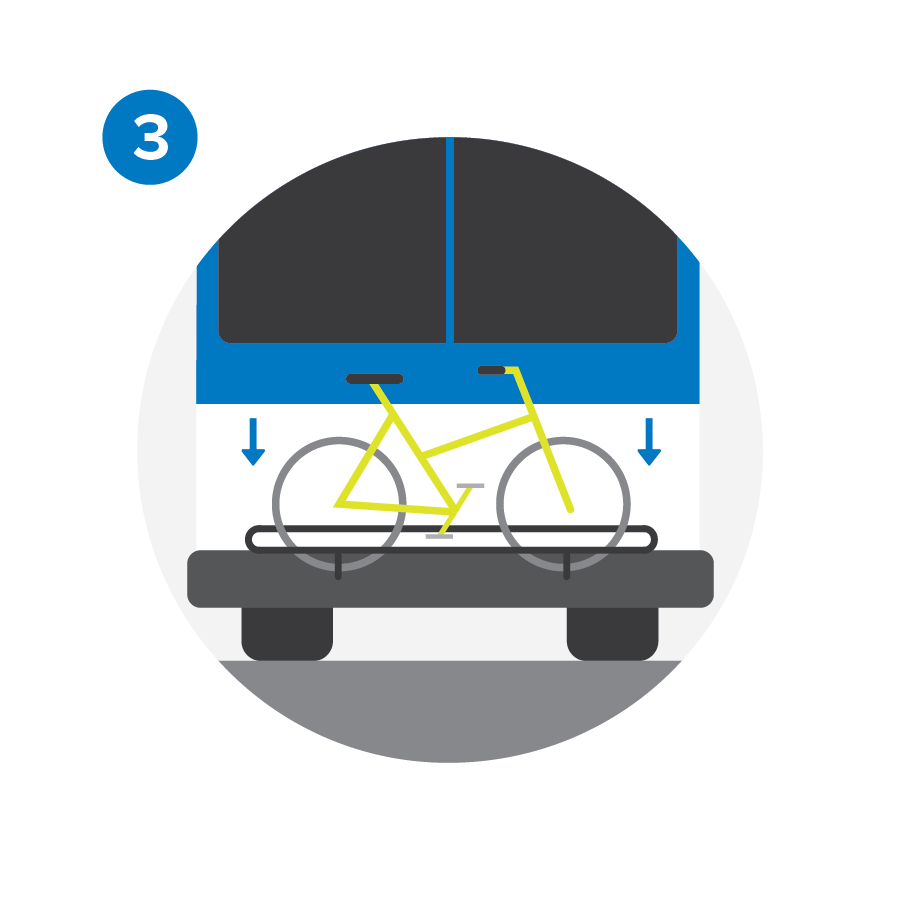
Load your bike into the slots labeled for front and rear wheel.
If there are no other bikes on board, load your bike in the front slots with the front wheel towards traffic.
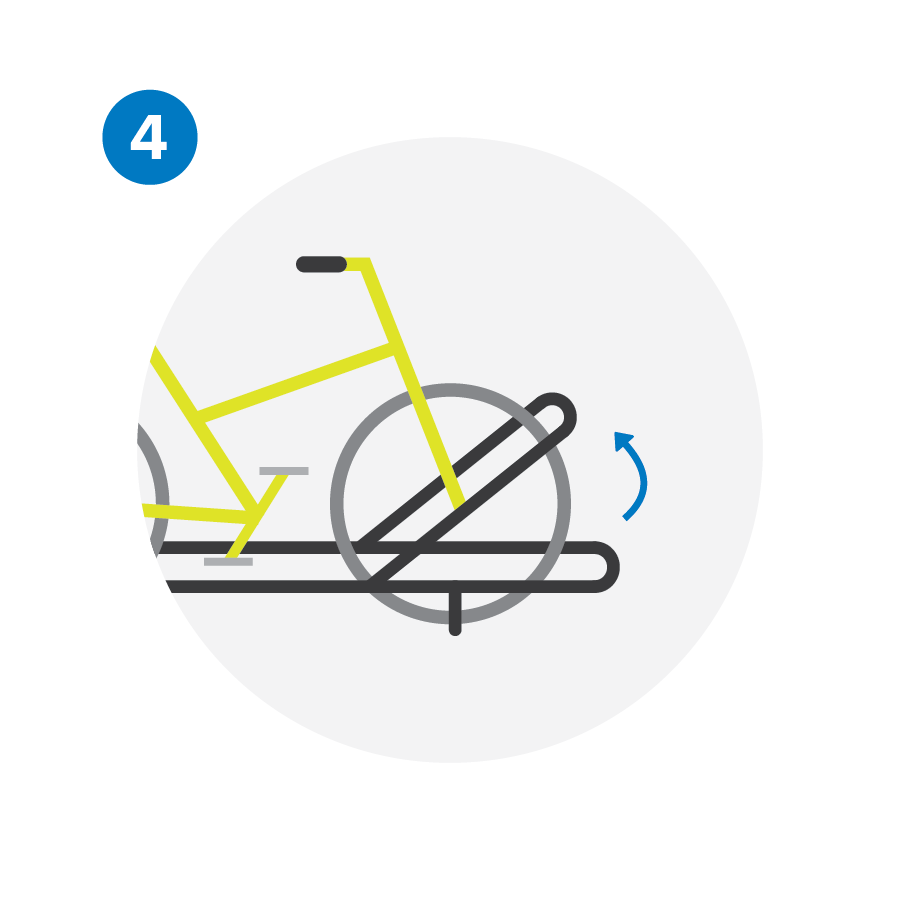
Raise the spring-loaded support arm over the front tire to secure the bike.
Make sure the arm rests on the tire as close to the frame as possible without touching the fender or frame.
- Sit near the front of the bus and watch your bike. Community Transit is not responsible for lost or stolen bicycles. For added security, you may lock your wheel to the bike frame, but never lock your bike to the rack.
- At your stop, remind the driver you need to unload your bicycle and exit at the front door.
- Remove the support arm and lift your bike off the rack. If there are no other bikes on board, please fold up the bike rack.
- Move onto the sidewalk or shoulder and wait for the bus to pass before heading on your way.
Swift bus bike racks
If you're riding on one of our Swift rapid transit buses, the bike racks will be located inside the bus instead of in front. Items on your bike that extend to the side or rear may need to be removed to keep the aisle clear and allow other bikes to be loaded.
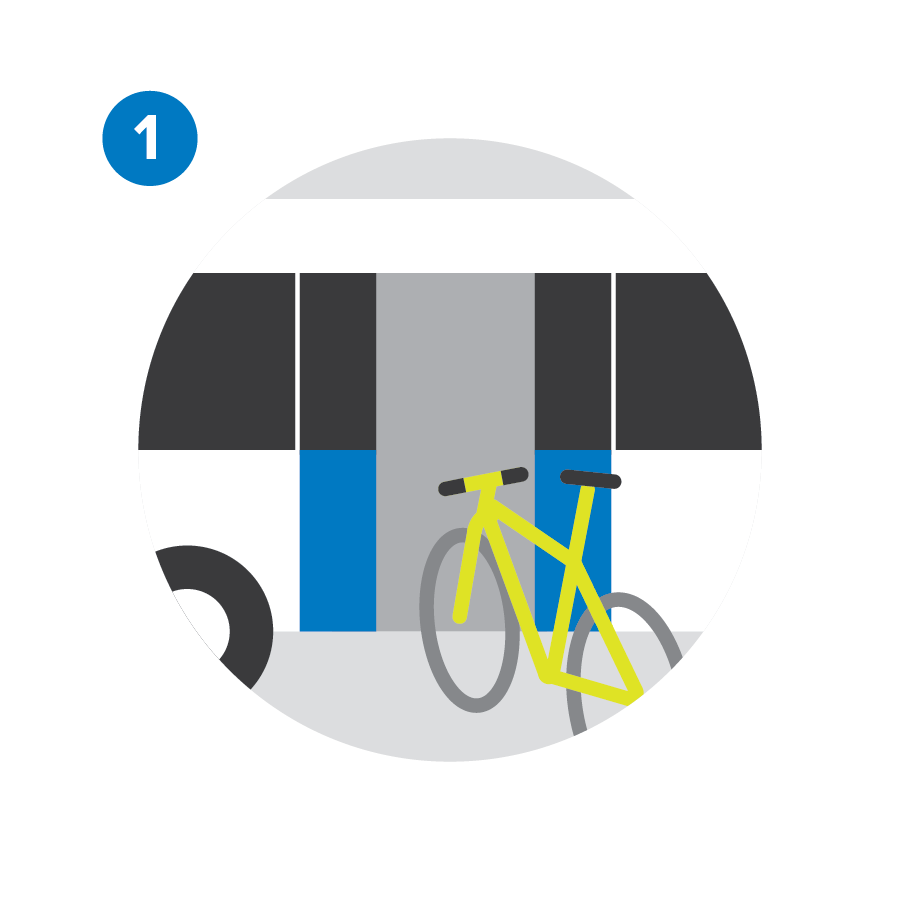
Board Swift through the rear door.
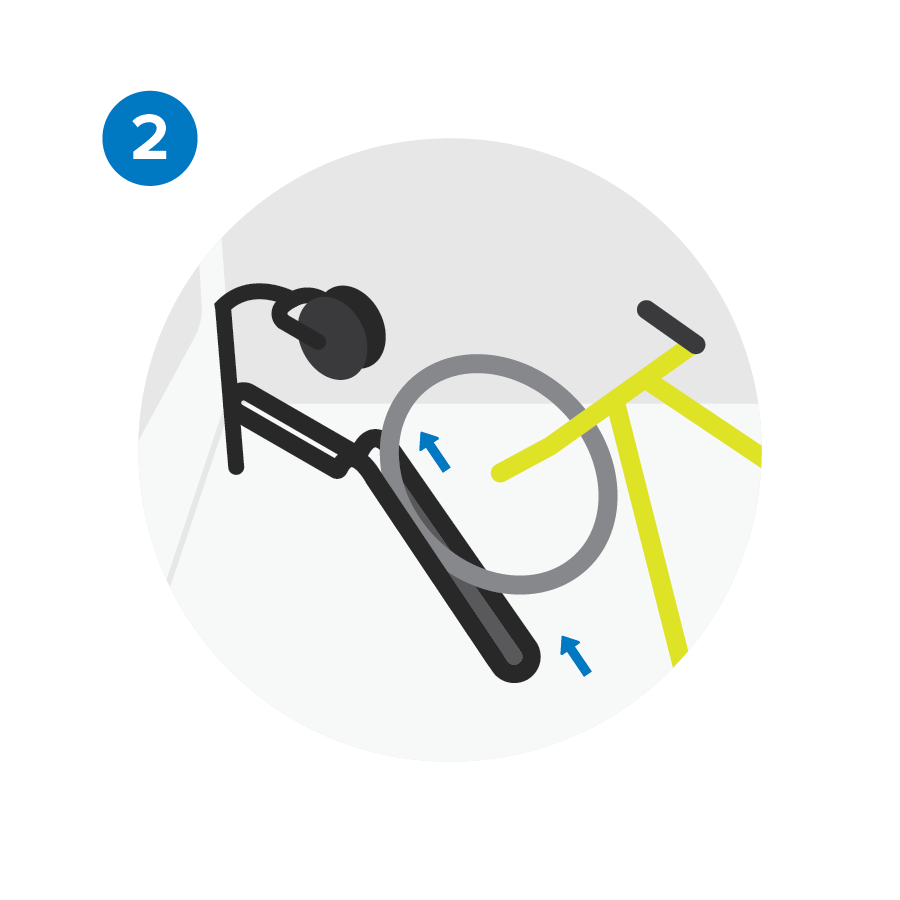
Push your bike onto the rack.
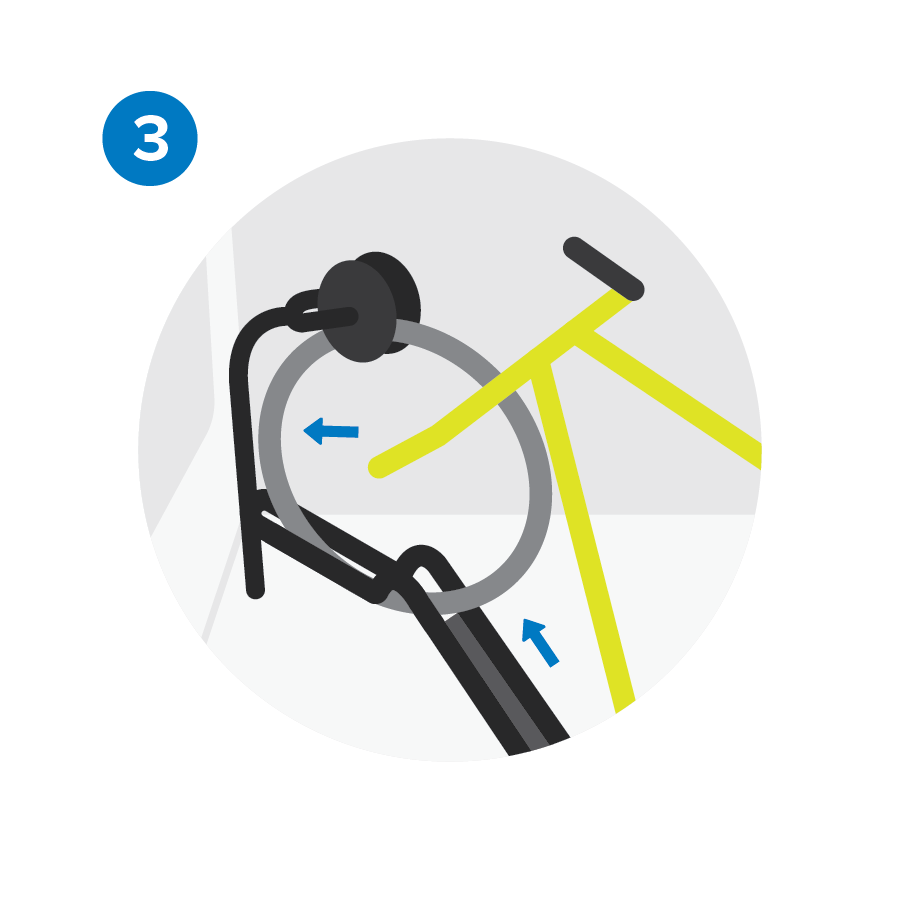
Secure the front wheel of your bike centered under the roller.
To remove your bike, pull back firmly and then exit through the rear door.
When the bike rack is full
- If the rack is full, bikes may be allowed on board the bus if the driver determines it is safe.
- If a driver allows a bike on board, it must be held securely by the bicycle owner at all times and must not block the aisle. Once a bike is secured inside the bus, it should remain there unless otherwise directed by the driver. Bikes that would not otherwise be permitted on the bike rack and excessively dirty bikes are not allowed inside buses.
- If there is no space for your bike on the bus, you may quickly lock your bike at the stop, wait for the next bus, or ride towards your destination. You might also want to consider renting an on-demand bike locker at a Community Transit Park & Ride.
Taking your bike to light rail?
With Sound Transit's Link light rail service in Snohomish County, you may need to take your bike on the train. Learn more about bringing your bike on Link and what to expect from Sound Transit's web site.
Forget your bike on the bus?
Submit a Lost & Found claim using our online form
Bicycles and other found items are turned into Community Transit's Ride Store. You can also call the Ride Store at (425) 348-2350 to claim a lost bike. Due to space limitations, bikes are only held for 10 days.
The Ride Store is located at Lynnwood City Center Station - 20110 46th Ave W. Lynnwood, WA 98036, open Monday – Friday, 7 a.m. – 6 p.m. and Saturday & Sunday 8:30 a.m. – 4 p.m.
Helpful links
Links and resources
B.I.K.E.S. Club of Snohomish County
Snohomish County Tourism Bureau
Washington State Department of Transportation

